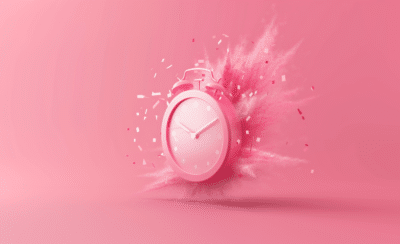So, you’ve heard the term “UX Design Process” thrown around at meetings, but you’re not entirely sure what it means. You nod along, hoping no one asks for your input. Don’t worry—you’re not alone. UX design can sound like an alien concept if you’re not knee-deep in the design world. Lucky for you, you Googled the term and found yourself on a blog post of an award-winning UX and product design shop. So, let’s break it down.
TLDR; Contents
What is the UX Design Process?
First things first—UX stands for User Experience. The UX design process is all about creating products that actually add value to users, and do it in the way that serves them best. It involves a series of steps that designers follow to ensure that the end product is user-friendly, enjoyable, and functional.
And doing it right is incredibly important: so while a seamless UX design can raise conversion rates by 400% and every dollar companies spend on UX gives back $100 (yeah, that’s a whopping 9900% ROI) it’s also true that 13% of customers who have a single bad experience will tell 15 people about it, and 91% of them won’t let you know why—they’ll just leave. Ergo, it’s absolutely critical for the sake of your customer retention, reputation, and bottom line to get your UX out the door. And that requires a meticulous UX design process.
The Steps of the UX Design Process
Here’s a quick tour of the typical UX Design Process:
Research and Discovery
This step is like preparing for a road trip. You don’t just jump into your car and start driving (unless you’re really adventurous). Instead, you gather information about your destination. Similarly, in UX design, you conduct research to understand the users, their needs, and the problems they face. This can involve user interviews, surveys, and competitor analysis.
- User Interviews: Conduct one-on-one interviews with potential users to gather qualitative insights into their needs, behaviors, and pain points. Direct user feedback helps in understanding the real issues users face, providing a solid foundation for your design.
- Surveys and Questionnaires: Distribute surveys to a larger audience to collect quantitative data. Quantitative data complements qualitative insights and helps in identifying trends and common issues.
- Competitive Analysis: Analyze competitors’ products to understand industry standards and identify opportunities for differentiation. Learning from competitors can help you avoid their mistakes and capitalize on their successes.
- Contextual Inquiry: Observe users in the actual world and situations in which they’d need your solution to see how they interact with products in real-world scenarios. Contextual insights can reveal hidden needs and usage patterns that aren’t apparent in interviews or surveys.
Define the Problem
Now that you have a bunch of data, it’s time to make sense of it. This step involves defining the core problem that your design will address. Think of it as identifying the specific itch you need to scratch.
- Affinity Diagramming: Group and organize data from research to identify patterns and key themes. This helps in making sense of large volumes of data and discovering relationships between different pieces of information.
- Persona Creation: Develop detailed user personas that represent different segments of your audience. Personas keep the design process user-focused by providing a clear picture of who you are designing for.
- User Journey Mapping: Map out the steps a user takes to achieve a goal with your product. Understanding the user journey helps identify pain points and opportunities for improvement at each stage.
- Problem Statement Formulation: Write a clear and concise problem statement that defines the core issue to be addressed. A well-defined problem statement ensures that everyone on the team is aligned and focused on solving the right problem.
Design Solutions
Here’s where the fun starts in the UX design process. Designers brainstorm and create wireframes, which are like the blueprints of your design. They might also develop prototypes—interactive models of the final product that users can test. This step is all about ideating and iterating.
- Brainstorming: Brainstorm a wide range of ideas and solutions through collaborative sessions. This encourages creativity and ensures that multiple perspectives are considered.
- Sketching: Create quick, rough sketches to visualize different ideas and concepts. Sketching allows for rapid iteration and exploration of various design directions.
- Wireframing: Develop low-fidelity wireframes that outline the basic structure and layout of your design. Wireframes help in focusing on functionality and layout without getting distracted by visual details.
- Prototyping: Build interactive prototypes to simulate the user experience and test design concepts. Prototypes make early testing and validation of ideas possible, saving time and resources in the long run.
Testing
Testing is a crucial piece of the UX design process because it helps you see if your design actually works. You put your prototype in front of real users and observe how they interact with it. It’s a bit like a taste test for a new recipe—you get to see if it’s delicious or needs more salt.
- Usability Testing: Conduct tests with real users to observe how they interact with the prototype. This identifies usability issues and areas of confusion, providing actionable feedback for improvements.
- A/B Testing: Compare multiple versions of a design to see which performs better with users. Data-driven decisions can be made based on user preferences and behaviors.
- Surveys and Feedback Forms: Collect feedback from users after they’ve tested the prototype. Direct user feedback provides insights into what works well and what needs improvement.
- Heuristic Evaluation: Have experts review the prototype against established usability principles. Expert reviews can identify potential usability issues that may not be apparent to users.
Implementation
After tailoring, (in)validating, and refining the design based on real user feedback, it’s time to build the final product. This involves close collaboration with developers to ensure the design is feasible and functional. It’s where the rubber meets the road.
- Design Handoff: Provide detailed design specifications and assets to developers. Doing so makes sure that the final product matches the design vision and maintains design integrity.
- Development Collaboration: Work closely with developers to address any technical constraints and ensure feasibility. Collaboration helps in resolving issues early and ensures a smoother development process.
- Quality Assurance (QA): Test the developed product for bugs, performance issues, and adherence to design. QA ensures that the product is polished and functions as intended before launch.
Launch and Monitor
Launch day is exciting, but the work doesn’t stop there. After the product is out in the wild, you need to monitor its performance and gather user feedback. This helps in making continuous improvements in the UX design process.
- Soft Launch: Release the solution to a small audience to gather initial feedback and identify any issues. A soft launch helps in catching last-minute issues and refining the product before a full release, so that you can hone it just a bit more before the big reveal (and possibly saving you from reputational hazards.)
- Full Launch: Officially release the product to the public. The full launch is the culmination of all the hard work, and it’s crucial to make a strong first impression.
- User Feedback Collection: Continue collecting feedback from users post-launch through reviews, surveys, and direct feedback. Ongoing feedback helps in identifying new issues and areas for improvement.
- Performance Monitoring: Track product analytics and key metrics such as user engagement, conversion rates, and user satisfaction. Monitoring performance helps in understanding how well the product meets user needs and business goals.
- Continuous Improvement: Iterate and improve the solution with real user feedback and performance data. Continuous improvement makes it so that the product keeps evolving to meet dynamically changing user needs and market conditions.
Why Should Non-Designers Care About the UX Design Process?
You might be thinking, “This is all great, but I’m not a designer. Why should I care?” Good question! Here’s why understanding the UX Design Process matters for everyone:
- Better Communication: Knowing the basics helps you communicate more effectively with designers and developers.
- Improved Collaboration: Understanding the process fosters better teamwork, as you’ll know what to expect at each stage.
- Informed Decisions: It enables you to make more informed decisions about how you develop your product and its user experience.
Wrapping Up The UX Design Process
The UX Design Process isn’t just a buzzword; it’s a structured approach to creating products that people love to use. By understanding the steps involved, even non-designers can contribute to making the end product better. So, the next time someone brings up UX in a meeting, you can join the conversation with confidence—no more nodding along in silence.
But…if you do need more help designing great UX, you know, beyond reading this overview–reach out to us. We’d love to talk 🙂




